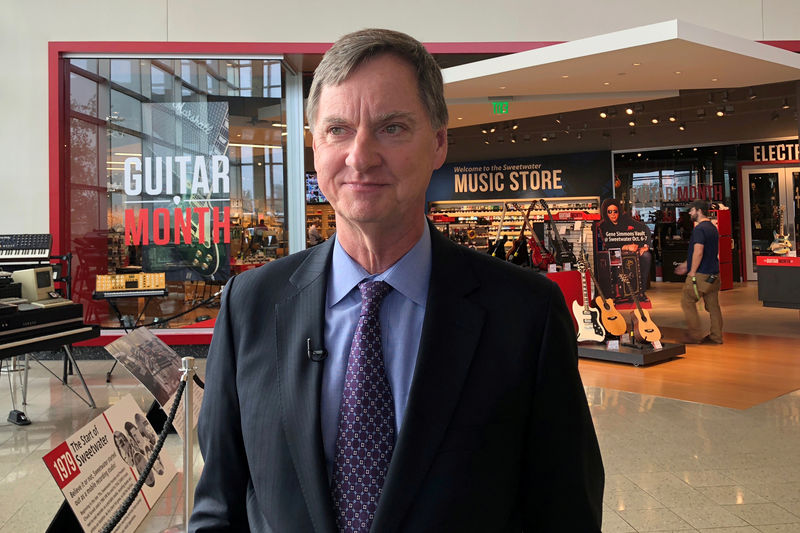 © Reuters. FILE PHOTO: Chicago Federal Reserve Bank President Evans visits the online music retailer Sweetwater in Fort Wayne
© Reuters. FILE PHOTO: Chicago Federal Reserve Bank President Evans visits the online music retailer Sweetwater in Fort WayneBy Ann Saphir
FLINT, Mich. (Reuters) – The Federal Reserve can likely stop raising U.S. interest rates once they reach about 3 percent, as long as inflation remains around 2 percent and the economy is doing well, Chicago Federal Reserve President Charles Evans suggested on Wednesday.
The Fed has been raising interest rates gradually since December 2015, and last month lifted its target for short-term rates to a range of 2 percent to 2.25 percent, responding to an economy that has been growing at a pace well above what Fed officials believe is sustainable.
Inflation, which had been worrisomely low in Evans’ view, is currently at the Fed’s 2-percent target. Unemployment fell last month to a 49-year low of 3.7 percent.
“We could move to a slightly restrictive policy stance and probably pause at that point and see how things are going,” Evans told reporters in Flint, Michigan after a talk at the local chamber of commerce.
Evans said he estimates neutral to be around 2.75 percent, so “something a little bit above that would be slightly restrictive” and would allow the unemployment rate to rise gradually to a more sustainable level.
Most Fed officials see a bit more tightening ahead for the Fed than Evans indicated on Wednesday. And Evans was clear that his view of a slightly restrictive policy rate as appropriate would change if incoming data suggested inflation or inflation expectations accelerate.
“My assumption for the policy rate is that we can achieve our objective of keeping inflation to the 2 percent symmetric objective and the unemployment rate slowly rising back towards its sustainable rate with that stance of funds rate – but if we need more, we’ll do more,” he said.
Fusion Media or anyone involved with Fusion Media will not accept any liability for loss or damage as a result of reliance on the information including data, quotes, charts and buy/sell signals contained within this website. Please be fully informed regarding the risks and costs associated with trading the financial markets, it is one of the riskiest investment forms possible.
Source: Investing.com




























